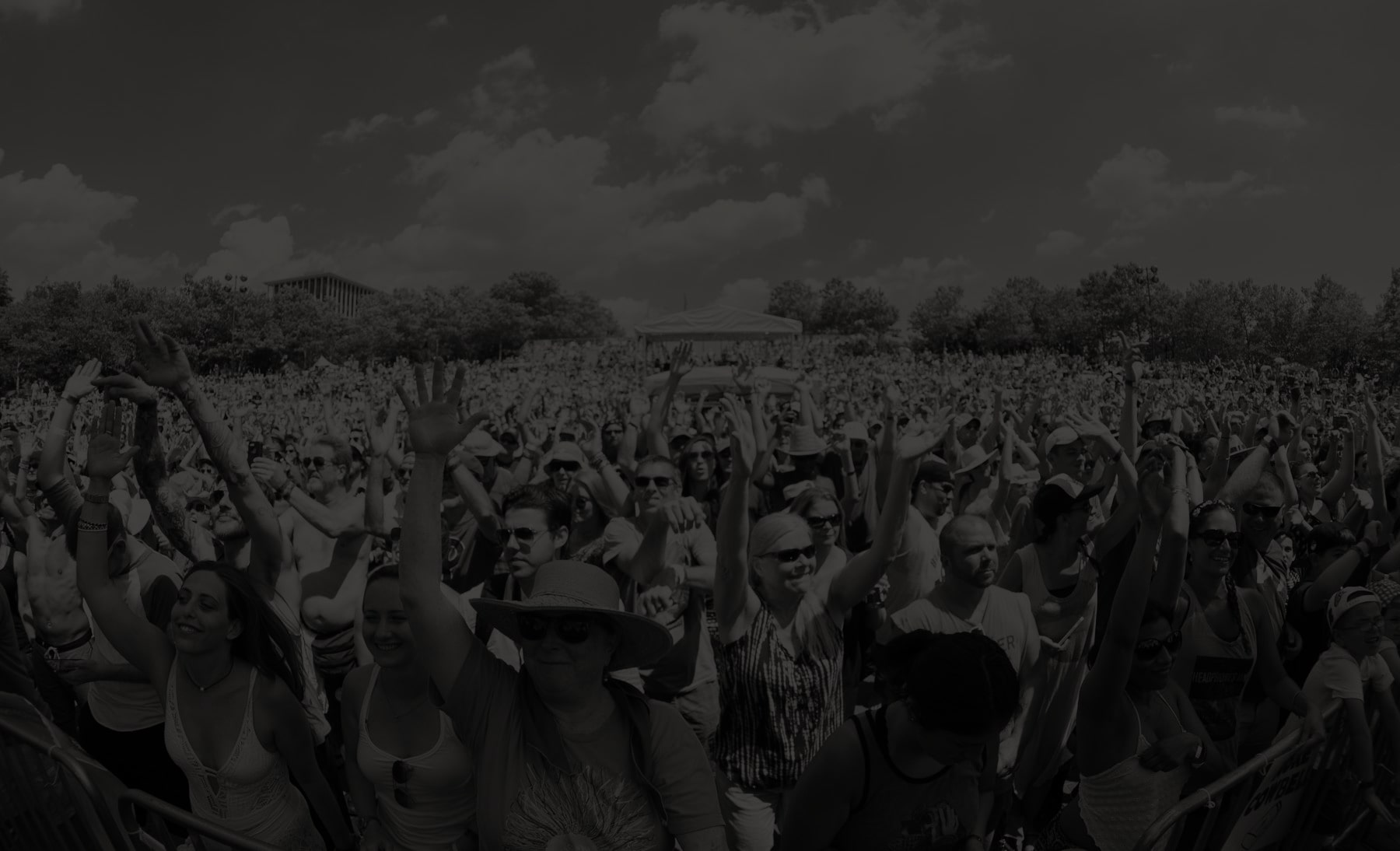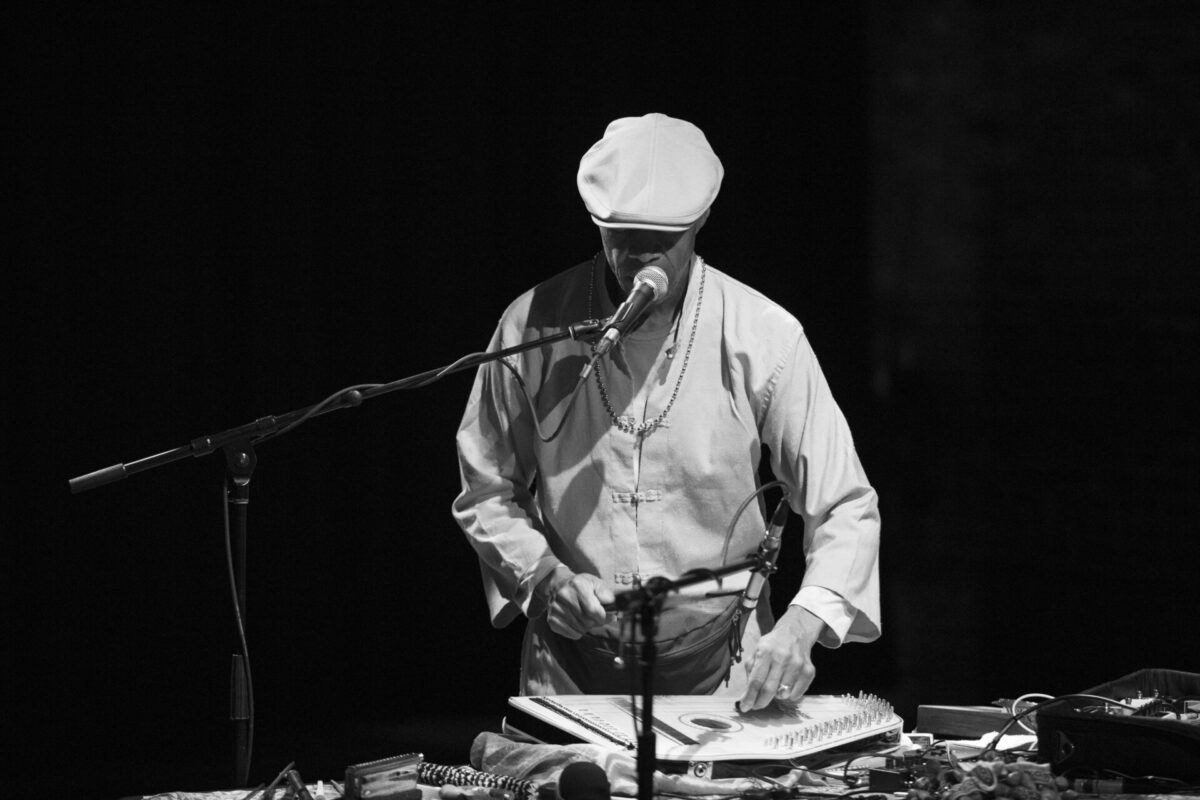
Laraaji on creating a much needed musical moment with Sun Piano
There are very few transcendent voices in music, artists who create universes around themselves that expand from the notes within the record grooves. Artists whose reliance on one instrument to propel a significant body of work — John Coltrane’s sultry sax, Sun Ra’s cosmic synth explorations, Dorothy Ashby’s lilting harp — these are all artists who have captured something indelibly powerful, engrossing and universal, reaching a point on the sonic spectrum that feels captivating yet retaining every bit of their respective esotericism.
Philadelphia born, New Jersey area experimental soundscape artist Laraaji has captured that elusive balance on his latest album, Sun Piano — a dream of an album from the UK’s All Saints label. A post-New Age eclectic, Laraaji’s usual instrument is the electric zither, a tool that has aided him in sending waves of blissfully radiant sounds on records like Vision Songs, Vol 1 and Sun Zither, but for this masterwork, he returns to the first instrument that ever enthralled him: the piano.
“I started playing the piano when I was very young, in-between church services,” he reminisces over the phone with The Key. “So here I am, playing music in a church, on an elite grand piano, so it felt like full circle. Here I am, channeling spontaneous new music for an official recording project.”
Sun Piano is a carefully crafted, nuanced work, recorded at the First Unitarian Church of Brooklyn in December of 2018 with engineer Jeff Zeigler. The two of them sat down and poured over the hours of improvisations and musical channeling to craft Sun Piano, and the results are stunning.
“I generally just drop into the inspirational zone and music happens, un-premeditatedly,” Laraaji says of his process. “Sitting at the piano ideas come — moods and emotions come over me, realizations, however spiritually inspired, come through. Prior to the recording I will do some calisthenics, some meditative exercises, to center my sense of self so that I can just spring out of present time with new ideas as they come through. New music results, even surprising to me — it’s a way of being in the universal moment, an intimate oneness with the creative universe.”
The result is a joyous, buoyant album of curated bliss. Laraaji’s playing is captured in moments that feel uplifiting and spiritual. “When I’m at a piano, I feel great. The idea of doing blues never comes to me. It’s recreation, it’s therapy, I feel alive.”
Sun Piano, with all of its reliance on beauty, is a challenging album, at times cascading (“Hold Onto the Vision”) and at other times percussive (“Flow Joy”), and of course, strangely playful, as on his sweetly melancholic rendition of the usually mournful, longing dirge of a folk standard “Shenandoah.” Here Laraaji captures the song in with windswept innocence that gives rise to something powerful and ethereal — perhaps the sun.
Even more specifically, the color orange our big, life-giving star radiates with, as staple attire for Laraaji both onstage and off. “Orange is an uplifiting color, it’s close to fire and sunlight, which is symbolic of transformation, change, shift, flowing — a releasing from density in order to be in the lightness of the present moment,” Laraaji says, explaining the aesthetic choice. “I began wearing it in the 70’s when a spiritual mentor made the connection for me. I began wearing the color as an articulation of a transcendental experience where I had a consciousness shift. So it’s a color of transformation, of service, of positive energy.”
There is an abundance of that energy on Sun Piano. Where legendary jazz pianist Cecil Taylor would possibly startle with controlled chaos and Sun Ra’s tweaked organ create a sense of cosmic dread, Laraaji pulls the listener in with brightness. By the time songs like “Elevation” arrives, you’re fully enthralled, captivated by Laraaji’s keen, New Age sensibilities — meditative qualities in Laraaji’s work are evident on Sun Piano. “This timeless, expansive, weightless self, this invisible self,” he says, “when I come back to it and sit with it, heaviness disappears, congestion disappears, frustration disappears, and I’m in a place of– a bliss, a joyousness that is independent of what’s going on in the world at the current time. I use it to balance so that I don’t get really overloaded with just the world’s narrative. I’d like to walk, move, dance and sing and perform, connected to an inner-narrative.”
Laraaji’s spirituality has always been a driving force in his work. After spending time with gurus like Swami Brahmananda Saraswati (the very teacher who hipped him to wearing orange) and studying texts like Ram Dass’s Be Here Now, his awakening easily made its way into his music. Having come to a modicum of notoriety on the heels of a collaboration with Brian Eno in the ‘80s as part of Eno’s Ambient series (Ambient 3: Day of Radiance), and then again during his presence in the 90’s experimental scene, interest in Laraaji’s work seems to bubble to the surface as each half-generation comes to musical age.
After Vision Songs Vol. 1 was released via hipster crate diggers Numero Group, a label known for unearthing music generally regarded as fringe or outsider, for a whole new set of typically indie ears, Laraaji’s presence has once again reemerged, culminating in rousing performances like the Ars Nova curated jazz and experimental festival October Revolution in 2018 and last fall to a packed house at the Rotunda via experimental music promoters Bowerbird. For many concert-goers at the latter, some of whom lay on the floor in meditative states, it was a religious experience. As impacted as Laraaji was by teachers like Saraswati over the years, Laraaji has become that for others– an idea or symbol they can look towards in these trying times.

“I get that so much from people who communicate with me from around the world, how their experience of the music I’ve released over the years, even this album I’m getting reports of people finding it uplifting, peaceful and beautiful. I feel that’s a wonderful contribution to be offering to people in this particular phase of the world unfolding.”
Sun Piano is a much needed musical moment, a record that exists to enlighten, not just reaction, in the midst of cultural upheaval. On the song “Reasonance”, the music is expansive, tension-filled, but never losing its spirit. On “Temple of New Light”, Laraaji embraces scale and majesty. Both songs feel like two gently woven sides of each other, typifying the Sun Piano experience in the extremity of their moods. Ultimately, it’s amazing to see a whole new generation discovering Laraaji, and with Sun Piano series, we are blessed to be assured of the longevity of a peace to come.